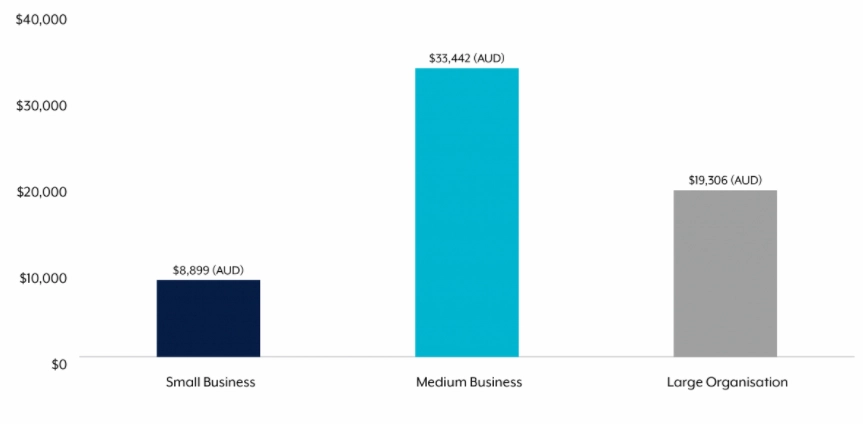Get us to call you
Fill in your details below to receive a call back quickly.
Fill in your details below to receive a call back quickly.
Fill in your details below to receive a call back quickly.
Fill in your details below to receive a call back quickly.


Developing an IT strategy for your business may not be something you’ve considered, especially if your business is small, or still in start-up mode. Given that most businesses rely on IT and digital tools to successfully operate, having an IT strategy is more important than you may realise, and it doesn’t need to be complex. An IT strategy is also important to manage and mitigate cybersecurity risk.
We’ve put together some of the key things you should consider when creating a simple IT strategy to support your business.
or fill in our online enquiry form today to contact us.
An IT strategy is like any business strategy, which outlines your business goals and how you plan to achieve them. It relates specifically to IT, and how you’ll manage your technology to help grow, improve, support and add value to your business both now and in the future.
Your IT strategy should be:
Developing an IT strategy will allow you to consider and answer some key question about how you’re using IT to support and grow your business, including:
For small businesses in particular, making the wrong IT investments or not having IT managed in a way that adds value can cause waste – in time, in money and in resources. Creating an IT strategy, either yourself or with an IT consultant, allows you to consider all the factors that will help you make the right choices for your business now, and in the future.
A simple IT strategy needs to address:
or fill in our online enquiry form today to contact us.
In business, a mission statement addresses the “how”, while a vision statement addresses the “what”. Vision statements paint a picture of your business’s ideal future state – on where you intend to be. A simple IT vision statement could be:
“Our vision is to leverage our information technology tools to create value for our customers and our teams, so that we can continue to grow and succeed in our market.”
Establishing what critical projects and initiatives your business has, and what IT you’ll need to support them, is important in your IT strategy. Setting out your projects, and the timelines you need to deliver them in, will help you identify any shortfalls in IT infrastructure, resourcing and budget that you’ll need in order to deliver them.
A stocktake of your IT resources will include:
This step gives you the opportunity to review your current IT management process, and consider whether it’s effective for your future state. Your live IT environment will be:
Take the time to consider whether your current IT management process is sufficient to support your business growth, or whether further investment or a model change is needed to add the most value. For small and medium sized businesses, managed IT services from a dedicated off-site provider can often help you make more effective use of your resources, providing greater resilience and expertise to ensure business continuity.
or fill in our online enquiry form today to contact us.
Your IT strategy should cover how your customers (and other users) will access your business content and communicate with you. This may be through a website or app, where they can see all the information they need about your products and services, and how to engage with you. Or it may include webchat, social media messaging, AI driven support, ecommerce and perhaps a customer portal.
Robust IT security is absolutely critical, to protect your business from cybersecurity risk. The impact of cybercrime on small to medium businesses can be significant, in both financial and reputational cost.
Between 1 July 2020 – 30 June 2021, the Australian Cyber Security Centre (ACSC) observed over 67,500 reports of cybercrime (up 13% from the previous year), and self-reported losses of $33 billion due to cybercrime. The average loss for medium sized businesses for each cybercrime reported was $AUD33,442 – that’s a significant sum to lose to cybercriminals for any business.

ACSC: Cybercrime reports and average reported loss by organisation size (2020-2021)
At minimum, your IT strategy needs to identify and address the following security related requirements to protect your business from cybercrime:
or fill in our online enquiry form today to contact us.
Last, but definitely not least, your IT strategy needs to include your IT costs and budget. Your costs will include:
Having a full understanding of the costs your business faces to manage the IT function is important for accurate budgeting and planning for future growth.
Absolutely – and, to reiterate, it doesn’t need to be complex. The components we’ve discussed above are the core components needed to ensure your business is managing its technology to grow, improve, support and add value to its operations, both now and in the future.
Maintaining and managing an IT strategy doesn’t need to be an onerous task, and its one that we can help with.
The team at SouthEast IT has over 30 years’ experience in the IT industry, including IT consultancy. We can provide guidance on the best IT strategy for your type and size of business, so that you have all the information you need to make the right decisions.
We can also help with hardware procurement, cloud services, backup and disaster recovery, internet and networking, and a range of other IT solutions, so that you can focus on running and growing your business.
or fill in our online enquiry form today to contact us.